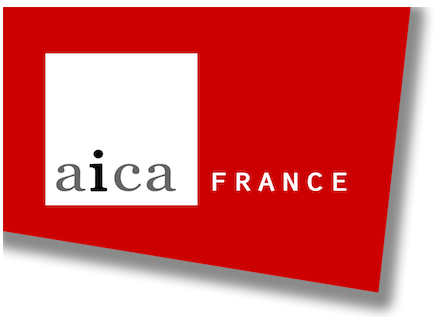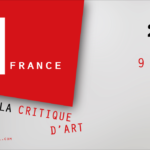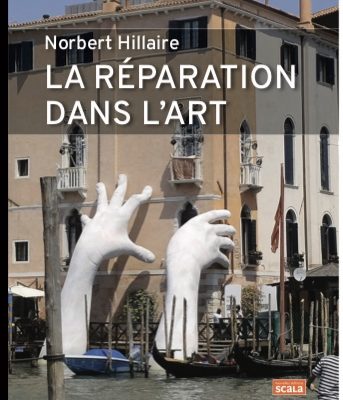
Photographe Renata Felinto, Axé Marias!, Registro de performance Margarida, 2019, photo de la collection BnF Paris, France
Le Brésil et la photographie
Les cartes que les européens commencèrent à dessiner à partir du XVIe siècle, représentaient de manière artistique les terres lointaines alors explorées. Ils cherchaient à tracer les différentes régions en se basant sur leurs attributs les plus marquants : les produits qu’on y avait découverts. Certains membres des expéditions étaient présents uniquement pour dessiner, donner un nom à tout ce qu’ils voyaient… ou imaginaient, afin de produire une documentation réunissant le plus d’informations. Dans la région située au sud des Amériques par exemple, ils découvrirent des terres appelées par les indigènes : Pindorama (terre des palmiers), une surface gigantesque, difficile d’être représentée étant donnée l’ampleur des mystères qui l’entouraient, avec une population très diversifiée et une tradition agricole, religieuse et sociale très ancienne. Les premières références à Pindorama, ont été trouvées sur une carte dessinée par Pedro Reinel e Lopo Homem en 1519, mentionnant la terre des indiens Tupy Guarani sous le nom de Terra Brasilis, se référant au bois des arbres des forêts qui, comme dans un geste exubérant du pouvoir de la nature, recouvraient totalement l’intérieur des terres, formant une forteresse pour se protéger des envahisseurs.
La photographie brésilienne en France : une belle inconnue ?
La photographie brésilienne naît véritablement grâce aux recherches du peintre naturaliste franco-brésilien Antoine Hercules Romuald Florence, au début du XIX° siècle, puis se développe sous l’impulsion de l’empereur Dom Pedro II, lui-même daguerréotypiste. Les relations photographiques entre la France et le Brésil, l’émulation entre les inventeurs des deux continents est alors au beau fixe.
Dans les années 1940, deux phénomènes vont intensifier la présence de la photographie brésilienne à l’international et en France en particulier :
– d’une part l’émergence des Foto Clubes Cariocas (Clubs de photographie de Rio de Janeiro) qui tout en démocratisant l’usage de ce médium jusqu’alors élitiste et principalement orienté vers le photojournalisme ou le portrait, permet de nouer des contacts avec d’autres sociétés de photographie occidentales ;
– d’autre part, l’engouement pour le modernisme brésilien et la présence à Paris d’un grand nombre de ses représentants qui permet à certains peintres et photographes comme Geraldo de Barros d’acquérir une certaine notoriété.
De 1964 à 1985, en pleine période de la dictature militaire, la situation des photographes brésiliens devient toutefois complexe et ils souffrent d’un déficit de moyens et d’un manque de reconnaissance qui les éloignent un temps de la scène de la photographie internationale. Néanmoins, ces photographes n’arrêtent pas leurs recherches et avancent vers un univers qui fait dialoguer la photographie et l’art contemporain.
En 1985, grâce à une politique de libération de l’expression artistique et une ouverture du marché brésilien aux nouvelles technologies, la photographie brésilienne gagne un nouveau souffle et à partir des années 1990 on assiste à une nouvelle révolution de la pensée créative brésilienne post-moderne, qui permet l’émergence d’une photographie accessible, libre, populaire et créative.
Toutefois, en France, à l’exception de quelques expositions à l’instar de Territoires et Vies du photographe brésilien Sebastião Salgado à la BnF en 2005, et Plaisir de la douleur de Miguel Rio Branco la même année à la MEP, la photographie brésilienne contemporaine demeure encore assez méconnue en France. Les différentes facettes du Brésil : son histoire, ses paysages urbains ou naturels, son métissage ethnique, évoquent les répercussions de la mondialisation dans ce pays en proie à de nouveaux défis écologiques et socio-politiques.
La photographie contemporaine brésilienne et ses influences
Le mot univers, du latin “un” (union) et “vorsum” (direction), nous pousse à croire que la nature, cet enchevêtrement de forces qui nous entourent, joue un rôle de génératrice et de rénovatrice de notre propre système.
Dans une convergence d’idées philosophiques et avec beaucoup de poésie, l’architecte Oscar Niemeyer, est parvenu à traduire quelques théories en sentiments personnels : “Je ne suis séduit ni par les angles droits, ni par les lignes droites, dures et inflexibles crées par l’homme. Je suis séduit par les courbes libres et sensuelles que l’on trouve dans les montagnes de mon pays, dans le cours sinueux de ses rivières, dans les vagues de l’océan, dans le corps de la femme que l’on aime. L’univers tout entier est composé de courbes, c’est l’univers courbe d’Einstein”.
Cette phrase de Niemeyer illustre elle aussi, de manière métaphorique, l’ample époque Moderniste de l’Histoire brésilienne qui à partir de cette période change peu à peu la production artistique et la vision du monde de la société brésilienne, créant une identité nationale laquelle la photographie va accompagner, s’en servir et s’exprimer.
La transition culturelle à travers la photographie au Brésil
La photographie contemporaine brésilienne est certainement le résultat de convergences culturelles, de bouleversements sociaux et d’une dynamique complexe qui a dominé le passé historique du pays et influence encore la région.
Au Brésil il n’y a donc aucune chance de discuter la photographie, dissocié de la politique, parce que finalement il y a un échange direct d’informations entre ces deux thèmes depuis le commencement de l’histoire.
Pour bien pouvoir connaitre la photographie brésilienne, il faut comprendre les mouvements historiques depuis Pindorama, les souffrances raciales et les changements écologiques et sociaux qui traversent le Brésil jusqu’aujourd’hui dans une transition culturelle continue.
Brazil and Photography
The maps that the Europeans began to draw from the sixteenth century, artistically represented the distant lands then explored. They sought to trace the different regions based on their most striking attributes: the products that were discovered there. Some members of the expeditions were present only to draw, give a name to everything they saw … or imagined, to produce a documentation gathering the most information. In the region to the south of the Americas for example, they discovered lands called by the natives: Pindorama (Land of Palms), a gigantic surface, difficult to be represented given the magnitude of the mysteries which surrounded it, with a very diverse population and a very old agricultural, religious and social tradition. The first references to Pindorama, were found on a map designed by Pedro Reinel and Lopo Homem in 1519, mentioning the land of the Tupy Guarani Indians under the name of Terra Brasilis, referring to the wood of the forest trees which, as in an exuberant gesture of the power of nature, completely covered the interior of the land, forming a fortress to protect itself from invaders.
Brazilian Photography in France: a Beautiful Unknown?
Brazilian photography is born thanks to the research of the Franco-Brazilian naturalist painter Antoine Hercules Romuald Florence, at the beginning of the 19th century, then develops under the impulse of the emperor Dom Pedro II, himself a daguerreotypist. The photographic relations between France and Brazil, the emulation between the inventors of the two continents is then in good shape.
In the 1940s, two phenomena will intensify the presence of Brazilian photography internationally and in France in particular:
– On the one hand, the emergence of the Foto Clubes Cariocas (Rio de Janeiro Photography Clubs) which, while democratizing the use of this hitherto elitist medium and mainly oriented towards photojournalism or portraiture, makes it possible to establish contacts with other Western photography companies;
– on the other hand, the craze for Brazilian modernism and the presence in Paris of a large number of its representatives that allows some painters and photographers like Geraldo de Barros to acquire a certain notoriety.
From 1964 to 1985, during the period of the military dictatorship, the situation of Brazilian photographers became complex, however, and Brazilian artists suffered from a lack of means and a lack of recognition that took them away from the international art scene for a time.
In 1985, thanks to a policy of liberation of artistic expression and an opening of the Brazilian market to new technologies, Brazilian photography gained a new lease of life, and from the 1990s there was a new revolution in Brazilian creative thinking, post-modern, which allows the emergence of an accessible, free, popular and creative photography.
However, with the exception of a few exhibitions such as “Territoires et Vies” (Territories and Lives) by Brazilian photographer Sebastião Salgado at the BnF in 2005, and Miguel Rio Branco’s “Plaisir de la douleur” (Pleasure of Pain) the same year at the MEP, contemporary Brazilian photography still remains quite unknown in France.
The different facets of Brazil: its history, its urban or natural landscapes, its ethnic mixture, evoke the repercussions of globalization in this country plagued by new ecological and socio-political challenges.
Contemporary Brazilian Photography and its Influences
The word universe, from the Latin un (union) and vorsum (direction), leads us to believe that nature, this tangle of forces that surround us, plays a generator role on our eco-system.
In a convergence of philosophical ideas and a poetic thinking, the architect Oscar Niemeyer, managed to translate some theories into personal feelings: « It is not the right angle that attracts me, nor the straight line, hard and inflexible, created by man. What attracts me is the free and sensual curve, the curve that I find in the mountains of my country, in the sinuous course of its rivers, in the waves of the sea, the body of a favourite woman. The entire universe is made by curves, the curved universe of Einstein. »
This phrase by Niemeyer also illustrates, in a metaphorical way, the broad Modernist era of Brazilian history which from this period gradually changes the artistic production and the worldview of Brazilian society, creating a national identity which photography will accompany to express itself.
Cultural Transition Through Photography in Brazil
Contemporary Brazilian photography is certainly the result of cultural convergences, social upheavals and a complex dynamic that has dominated the country’s historical past and still influences the region.
In Brazil there is therefore no chance to discuss photography, dissociated from politics, because ultimately there has been a direct exchange of information between these two themes since the beginning of history.
To get to know Brazilian photography well, it is necessary to understand the historical movements since Pindorama, the racial sufferings and the ecological and social changes which cross Brazil until today in a continuous cultural transition.
Fiche technique
Photographe Renata Felinto
Axé Marias !, Performance Margarida, Renata Felinto, 2019, Collection de photographie brésilienne de la BnF, Paris, France
29, 7 cm x 42 cm
Axé Marias!, Margarida Performance, Renata Felinto, 2019, BnF Brazilian Photography Collection, Paris, France
11.6 in x 16.5 in













